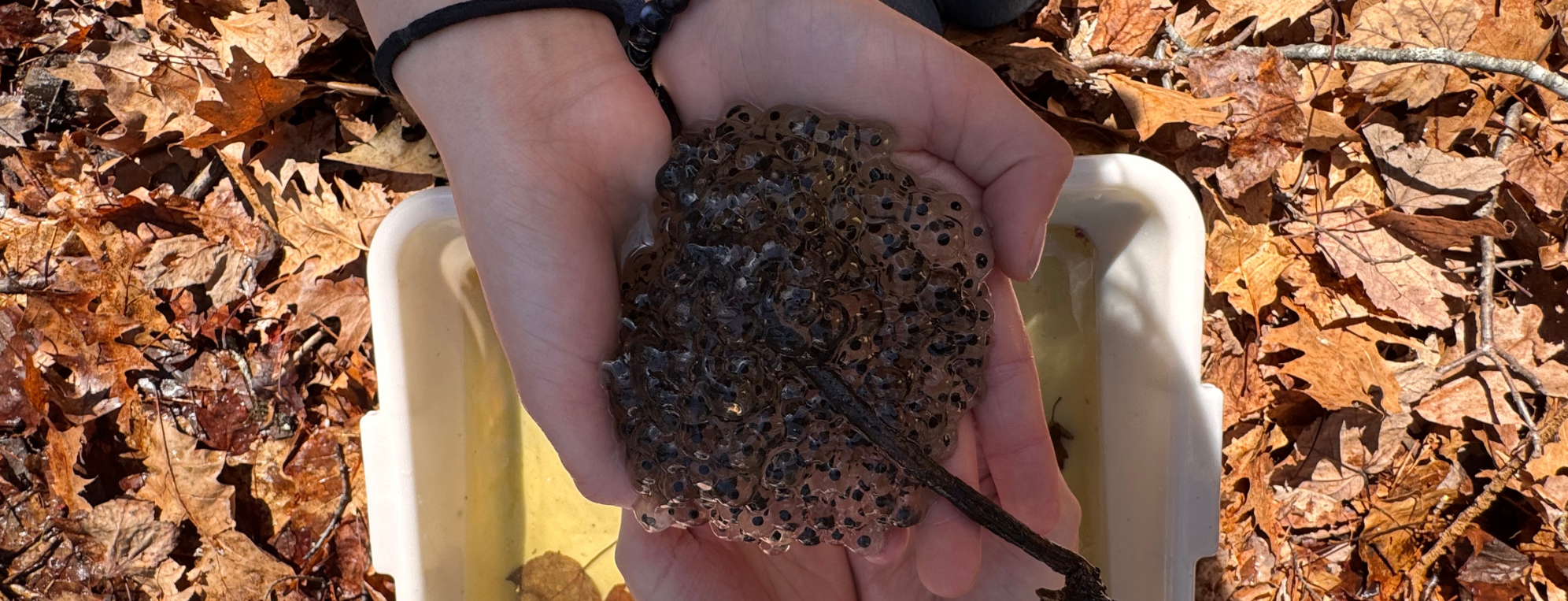There's a fleeting kind of magic that stirs in the forest each spring- hidden in shallow, sunlit pools that vanish almost as quickly as they appear. These are vernal pools, and they're teeming with life, mystery, and the perfect kind of mud-splattered wonder for curious kids (and grown-ups too).
At Tanglewood Hollow, we believe that nature makes an excellent classroom.`And vernal pools- quiet, seasonal nurseries full of eggs, tadpoles, and tiny shrimp- are one of its most enchanting lessons. Whether you're heading into the woods with a field guide or just a curious heart, this guide will help you explore these magical ecosystems with care, curiosity, and a sense of adventure.
In this Entry:
- What is a Vernal Pool?
- Why Vernal Pools Matter
- What You Might Find
- How to Explore with Children
- What to Pack
- A Note on Conservation
- The Wonder Lives On
WHAT IS A VERNAL POOL?



Vernal pools are temporary wetlands- seasonal puddles and shallow forest basins that fill with water in early spring and usually dry up by summer. Because they don't support fish, they become safe havens for species that need fish-free waters to lay their eggs and begin their life cycles.
These pools may look quiet, but beneath the surface, an entire world is waking up.
WHY VERNAL POOLS MATTER
In New England (and especially here. inNew Hampshire), vernal pools are essential to the survival of many amphibians and invertebrates. Creatures like wood frogs, spotted salamanders, and fairy shrimp rely on these temporary ecosystems to breed each year.
Because the pools don't last long, everything happens in fast motion- eggs are laid, hatchlings grow, and the water disappears, leaving only damp leaves and memories behind. Without these seasonal habitats, many of these species would have nowhere to reproduce.
WHAT YOU MIGHT FIND
There's no need to go far off trail- vernal pools often appear near wooded paths, in dips in the forest floor, or alongside hiking routes. Here's what you might spot during your visit:
- Wood Frog Eggs- Floating clusters of jelly-like eggs, often near the surface.
- Spotted Salamander Eggs- Thicker, cloudier egg masses attached to underwater sticks or grasses.
- Fairy Shrimp- Tiny crustaceans swimming upside down!
- Mosquito Larvae- Wiggling, threadlike larvae that move with quick, jerky bursts.
- Caddisfly Larvae- Clever little architects building homes from bits of leaf and sand.
- Tadpoles- Depending. onyour timing, you might spot newly hatched swimmers or older ones developing legs!
Each week brings something new. The more often you visit, the more of this incredible transformation you'll witness.


HOW TO EXPLORE WITH CHILDREN
Vernal pool visits can be as simple or. as structured as you'd like. Let your child's curiosity lead the way, or try these ideas to guide your experience.
1. Let Curiosity Lead
Encourage open-ended observation. Ask what they notice, what they wonder, what's changed since the last visit.
2. Use Gentle Tools
A net or opaque white container lets kids gently scoop and observe without harm. Always return creatures to the pool right away.
3. Start a Field Journal
Bring a notebook to draw creatures, write down questions, or chart changes week to week.
4. Visit Often
One visit is magical. Two or three reveal the full story- eggs hatching, tadpoles swimming, water slowly disappearing.
5. Ask Big Questions
Why do these creatures live here? What happens when the pool dries up? Where do they go?
WHAT TO PACK
Make the experience smooth (and muddy!) with these supplies:
- Waterproof boots
- A small net, magnifying jar, or container
- Towels and a change. ofclothes
- Nature journal and colored pencils
- A field guide or ID sheet
- Optional: Thermometer, shallow white tray, magnifying glass.
A NOTE ON CONSERVATION
Vernal pools are incredibly fragile. Many of the creatures found here are vulnerable or declining due to habitat loss and development. Stay on the edges, avoid stepping directly into. the pool, and always handle creatures with care. Teach children to be gentle, grateful observers- not collectors.
Some vernal pools are protected under state law, and it's up to all of us to ensure they stay healthy for the next generation of amphibians- and young naturalists.
THE WONDER LIVES ON
As the water slowly disappears and summer draws near, the pool becomes quiet again. But for the children who crouched beside its edge, peered into its depths, and asked wide-eyed questions, the memory lasts.
Vernal pools remind us that not all magic is flashy. Some of it waits in the woods, tucked between the trees, dancing beneath the surface.
So this spring, go exploring. Pack your boots, bring your curiosity, and let the woods show you what's possible.



